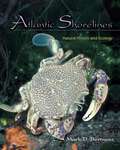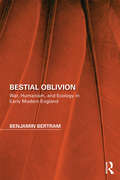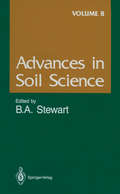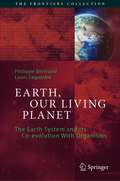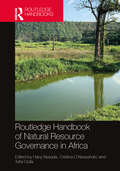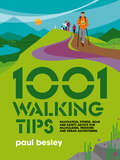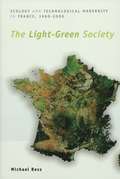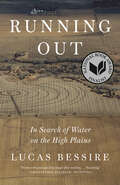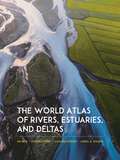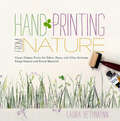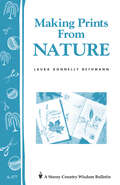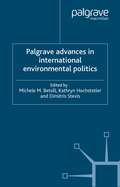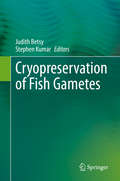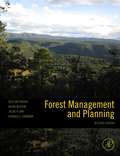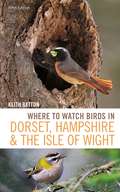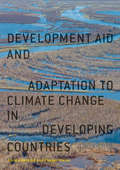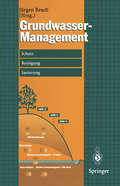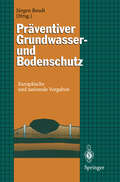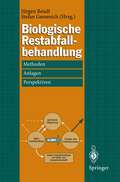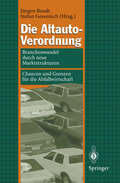- Table View
- List View
A Brief Natural History of Civilization: Why a Balance Between Cooperation & Competition Is Vital to Humanity
by Mark BertnessA compelling evolutionary narrative that reveals how human civilization follows the same ecological rules that shape all life on Earth Offering a bold new understanding of who we are, where we came from, and where we are going, noted ecologist Mark Bertness argues that human beings and their civilization are the products of the same self-organization, evolutionary adaptation, and natural selection processes that have created all other life on Earth. Bertness follows the evolutionary process from the primordial soup of two billion years ago through today, exploring the ways opposing forces of competition and cooperation have led to current assemblages of people, animals, and plants. Bertness’s thoughtful examination of human history from the perspective of natural history provides new insights about why and how civilization developed as it has and explores how humans, as a species, might have to consciously overrule our evolutionary drivers to survive future challenges.
Atlantic Shorelines: Natural History and Ecology
by Mark D. BertnessA comprehensive introduction to the natural history and intertidal ecology of East Coast shorelinesAtlantic Shorelines is an introduction to the natural history and ecology of shoreline communities on the East Coast of North America. Writing for a broad audience, Mark Bertness examines how distinctive communities of plants and animals are generated on rocky shores and in salt marshes, mangroves, and soft sediment beaches on Atlantic shorelines.The book provides a comprehensive background for understanding the basic principles of intertidal ecology and the unique conditions faced by intertidal organisms. It describes the history of the Atlantic Coast, tides, and near-shore oceanographic processes that influence shoreline organisms; explains primary production in shoreline systems, intertidal food webs, and the way intertidal organisms survive; sets out the unusual reproductive challenges of living in an intertidal habitat, and the role of recruitment in shaping intertidal communities; and outlines how biological processes like competition, predation, facilitation, and ecosystem engineering generate the spatial structure of intertidal communities.The last part of the book focuses on the ecology of the three main shoreline habitats—rocky shores, soft sediment beaches, and shorelines vegetated with salt marsh plants and mangroves—and discusses in detail conservation issues associated with each of them.
Atlantic Shorelines: Natural History and Ecology
by Mark D. BertnessA comprehensive introduction to the natural history and intertidal ecology of East Coast shorelinesAtlantic Shorelines is an introduction to the natural history and ecology of shoreline communities on the East Coast of North America. Writing for a broad audience, Mark Bertness examines how distinctive communities of plants and animals are generated on rocky shores and in salt marshes, mangroves, and soft sediment beaches on Atlantic shorelines.The book provides a comprehensive background for understanding the basic principles of intertidal ecology and the unique conditions faced by intertidal organisms. It describes the history of the Atlantic Coast, tides, and near-shore oceanographic processes that influence shoreline organisms; explains primary production in shoreline systems, intertidal food webs, and the way intertidal organisms survive; sets out the unusual reproductive challenges of living in an intertidal habitat, and the role of recruitment in shaping intertidal communities; and outlines how biological processes like competition, predation, facilitation, and ecosystem engineering generate the spatial structure of intertidal communities.The last part of the book focuses on the ecology of the three main shoreline habitats—rocky shores, soft sediment beaches, and shorelines vegetated with salt marsh plants and mangroves—and discusses in detail conservation issues associated with each of them.
Bestial Oblivion: War, Humanism, and Ecology in Early Modern England (Perspectives on the Non-Human in Literature and Culture)
by Benjamin BertramAlthough war is a heterogeneous assemblage of the human and nonhuman, it nevertheless builds the illusion of human autonomy and singularity. Focusing on war and ecology, a neglected topic in early modern ecocriticism, Bestial Oblivion: War, Humanism, and Ecology in Early Modern England shows how warfare unsettles ideas of the human, yet ultimately contributes to, and is then perpetuated by, anthropocentrism. Bertram’s study of early modern warfare’s impact on human-animal and human-technology relationships draws upon posthumanist theory, animal studies, and the new materialisms, focusing on responses to the Anglo-Spanish War, the Italian Wars, the Wars of Religion, the colonization of Ireland, and Jacobean “peace.” The monograph examines a wide range of texts—essays, drama, military treatises, paintings, poetry, engravings, war reports, travel narratives—and authors—Erasmus, Machiavelli, Digges, Shakespeare, Marlowe, Coryate, Bacon—to show how an intricate web of perpetual war altered the perception of the physical environment as well as the ideologies and practices establishing what it meant to be human.
Bestial Oblivion: War, Humanism, and Ecology in Early Modern England (Perspectives on the Non-Human in Literature and Culture)
by Benjamin BertramAlthough war is a heterogeneous assemblage of the human and nonhuman, it nevertheless builds the illusion of human autonomy and singularity. Focusing on war and ecology, a neglected topic in early modern ecocriticism, Bestial Oblivion: War, Humanism, and Ecology in Early Modern England shows how warfare unsettles ideas of the human, yet ultimately contributes to, and is then perpetuated by, anthropocentrism. Bertram’s study of early modern warfare’s impact on human-animal and human-technology relationships draws upon posthumanist theory, animal studies, and the new materialisms, focusing on responses to the Anglo-Spanish War, the Italian Wars, the Wars of Religion, the colonization of Ireland, and Jacobean “peace.” The monograph examines a wide range of texts—essays, drama, military treatises, paintings, poetry, engravings, war reports, travel narratives—and authors—Erasmus, Machiavelli, Digges, Shakespeare, Marlowe, Coryate, Bacon—to show how an intricate web of perpetual war altered the perception of the physical environment as well as the ideologies and practices establishing what it meant to be human.
Advances in Soil Science (Advances in Soil Science #8)
by A. R. Bertrand J. C. Day R. J. Gibbs P. M. Huang R. E. Meyer A.S.P. Murthy R. I. Papendick J. B. Reid J. L. SteinerAdvances in Soil Science is a review series relevant to all areas of soil science. These reviews, intended primarily for scientists, teachers, and students of soil science, also provide technical background information for many additional workers and groups interested in our natural resources and man's influence on them. This is the eighth volume in the series with an international list of contributors from the United States, India, Canada and New Zealand. It contains four review chapters on the following subjects: factors affecting aluminum transformations in soil; soil productivity in dryland regions of developing countries; changes in soil structure under different cropping systems; properties and management of the depleted soils of India. These contributions present valuable information on a diversity of topics and serve as an excellent source of references.
Earth, Our Living Planet: The Earth System and its Co-evolution With Organisms (The Frontiers Collection)
by Philippe Bertrand Louis LegendreEarth is, to our knowledge, the only life-bearing body in the Solar System. This extraordinary characteristic dates back almost 4 billion years. How to explain that Earth is teeming with organisms and that this has lasted for so long? What makes Earth different from its sister planets Mars and Venus? The habitability of a planet is its capacity to allow the emergence of organisms. What astronomical and geological conditions concurred to make Earth habitable 4 billion years ago, and how has it remained habitable since? What have been the respective roles of non-biological and biological characteristics in maintaining the habitability of Earth? This unique book answers the above questions by considering the roles of organisms and ecosystems in the Earth System, which is made of the non-living and living components of the planet. Organisms have progressively occupied all the habitats of the planet, diversifying into countless life forms and developing enormous biomasses over the past 3.6 billion years. In this way, organisms and ecosystems "took over" the Earth System, and thus became major agents in its regulation and global evolution. There was co-evolution of the different components of the Earth System, leading to a number of feedback mechanisms that regulated long-term Earth conditions. For millennia, and especially since the Industrial Revolution nearly 300 years ago, humans have gradually transformed the Earth System. Technological developments combined with the large increase in human population have led, in recent decades, to major changes in the Earth's climate, soils, biodiversity and quality of air and water. After some successes in the 20th century at preventing internationally environmental disasters, human societies are now facing major challenges arising from climate change. Some of these challenges are short-term and others concern the thousand-year evolution of the Earth's climate. Humans should become the stewards of Earth.
Routledge Handbook of Natural Resource Governance in Africa
by Hany Besada Cristina D'Alessandro Tefsi GollaThe Routledge Handbook of Natural Resource Governance in Africa provides a comprehensive analysis of African natural resource governance, stretching across the continent, and encompassing water, land, extractive resources, and mining.Africa’s natural resources are not only crucial for the continent from an economic, environmental, and political perspective, but they are also of significant geopolitical importance, with direct implication for meeting the global challenges outlined in the Sustainable Development Goals. Whether an abundance of natural resources proves to be a curse or a blessing depends on the nature, extent, and outcome of the effort and experience of an individual country in governing and managing such assets. It is with this in mind that this ground-breaking handbook brings together experts from across the field of natural resource development to reflect on the varied regime types and paradigms within the continent’s natural resource sectors, the specific challenges they face, and their role within global value chains. The book first considers governance for sustainable development and discourses of land and development financing, before going on to investigate the regulatory and policy impacts, and socioeconomic implications of natural resource management. Finally, the Handbook situates the African continent within the emerging global energy transition; examining trends in South-South cooperation, and new frontiers for the harnessing of critical tools in a sustainable future for natural resource governance and management.Overall, the Handbook’s in-depth analysis provides a unique blend of realism and optimism, highlighting the importance of building a new sustainable African resource narrative for shared prosperity. The handbook will be an essential read for researchers and policy makers with an interest in sustainable development and natural resource governance in Africa.
1001 Walking Tips: Navigation, fitness, gear and safety advice for hillwalkers, trekkers and urban adventurers (1001 Tips #4)
by Paul Besley1001 Walking Tips by Paul Besley is a light-hearted and informative guide to all kinds of walking.This is no standard instruction manual – it is much more useful than that. This is a huge collection of small tips to make a real difference to your walking, whether you’re on a leisurely stroll in your local urban area, exploring a national park, planning a long-distance trail or hiking in the mountains in winter – this book will help you to make the most of every walk.The vast range of topics covered includes navigation, essential kit and clothing, safety, fitness, food, walking with dogs, how to cope with various weather conditions and what to do if you get lost. Whether you’re a walking novice or an experienced trekker, Paul’s wealth of knowledge and practical advice will inspire you and help to enrich your time outdoors.
The Light-Green Society: Ecology and Technological Modernity in France, 1960-2000
by Michael BessThe accelerating interpenetration of nature and culture is the hallmark of the new "light-green" social order that has emerged in postwar France, argues Michael Bess in this penetrating new history. On one hand, a preoccupation with natural qualities and equilibrium has increasingly infused France's economic and cultural life. On the other, human activities have laid an ever more potent and pervasive touch on the environment, whether through the intrusion of agriculture, industry, and urban growth, or through the much subtler and more well-intentioned efforts of ecological management. The Light-Green Society limns sharply these trends over the last fifty years. The rise of environmentalism in the 1960s stemmed from a fervent desire to "save" wild nature-nature conceived as a qualitatively distinct domain, wholly separate from human designs and endeavors. And yet, Bess shows, after forty years of environmentalist agitation, much of it remarkably successful in achieving its aims, the old conception of nature as a "separate sphere" has become largely untenable. In the light-green society, where ecology and technological modernity continually flow together, a new hybrid vision of intermingled nature-culture has increasingly taken its place.
Running Out: In Search of Water on the High Plains
by Lucas BessireAn intimate reckoning with aquifer depletion in America's heartlandThe Ogallala aquifer has nourished life on the American Great Plains for millennia. But less than a century of unsustainable irrigation farming has taxed much of the aquifer beyond repair. The imminent depletion of the Ogallala and other aquifers around the world is a defining planetary crisis of our times. Running Out offers a uniquely personal account of aquifer depletion and the deeper layers through which it gains meaning and force.Anthropologist Lucas Bessire journeyed back to western Kansas, where five generations of his family lived as irrigation farmers and ranchers, to try to make sense of this vital resource and its loss. His search for water across the drying High Plains brings the reader face to face with the stark realities of industrial agriculture, eroding democratic norms, and surreal interpretations of a looming disaster. Yet the destination is far from predictable, as the book seeks to move beyond the words and genres through which destruction is often known. Instead, this journey into the morass of eradication offers a series of unexpected discoveries about what it means to inherit the troubled legacies of the past and how we can take responsibility for a more inclusive, sustainable future.An urgent and unsettling meditation on environmental change, Running Out is a revelatory account of family, complicity, loss, and what it means to find your way back home.
The World Atlas of Rivers, Estuaries, and Deltas
by Jim Best Stephen Darby Luciana Esteves Carol WilsonA stunningly illustrated atlas of the world&’s rivers, estuaries, and deltas, and their ecosystemsFrom the Congo and the Mekong to the Seine and the Mississippi, Earth&’s rivers carve through landscapes before coursing into the world&’s oceans through estuaries and deltas. Their inexorable flow carries sediment and more, acting as lifeblood for a variety of ecosystems and communities. More than any other surface feature of Earth, rivers, estuaries, and deltas are vitally important to our economic and social well-being, and our management of them often sits at the sharp edge of today&’s most pressing environmental challenges. The World Atlas of Rivers, Estuaries, and Deltas takes readers on an unforgettable tour of these dynamic bodies of water, explaining how they function at each stage of their flow. Combining maps and graphics with informative essays and beautiful photos, this invaluable reference book will give you a new appreciation for the power that rivers, estuaries, and deltas wield.Features a wealth of color photos, maps, and infographicsBrings together invaluable perspectives from leading expertsDescribes the rich biodiversity associated with the world&’s rivers, estuaries, and deltasExplains how rivers, estuaries, and deltas work, from river networks to deltaic floodplains, and sheds light on the erosion, movement, and deposition of sedimentDescribes the anatomy of rivers, estuaries, and deltas, from channel geometry and river planforms to estuarine shape and delta morphologyExamines the ecology and ecosystems of rivers, estuaries, and deltas and how humans interact with these environmentsAdditional topics include damming, climate change, water use, pollution, resource management, and planetary health, as well as future perspectives on these vital landscapes
Hand Printing from Nature: Create Unique Prints for Fabric, Paper, and Other Surfaces Using Natural and Found Materials
by Laura Donnelly BethmannDiscover how to use natural materials to print on any surface, from paper and fabric to ceramics, wood, and walls. With simple step-by-step instructions and clear photographs, Laura Bethmann encourages crafters of all levels to create original nature prints with leaves, flowers, fruits, shells, stones, and more. Her unique project ideas include stationery printed with maple leaves, a clothes hamper printed with scallop shells, and a pillow printed with cabbage. Before you know it, you&’ll be designing one-of-a-kind nature prints to reflect your unique personality and style.
Making Prints from Nature: Storey's Country Wisdom Bulletin A-177 (Storey Country Wisdom Bulletin)
by Laura Donnelly BethmannSince 1973, Storey's Country Wisdom Bulletins have offered practical, hands-on instructions designed to help readers master dozens of country living skills quickly and easily. There are now more than 170 titles in this series, and their remarkable popularity reflects the common desire of country and city dwellers alike to cultivate personal independence in everyday life.
Palgrave Advances in International Environmental Politics (Palgrave Advances)
by M. Betsill K. Hochstetler D. StevisPalgrave Advances in International Environmental Politics provides a state of the art review of the major theoretical approaches and substantive debates of the field. The first section reviews the historical development of international environmental politics as well as the theoretical and methodological approaches used in its study. The following chapters each review the trajectory of a key research area within international environmental politics and elaborate on current approaches and debates. Case studies in each chapter illuminate the main theoretical questions that emerge from the review.
Cryopreservation of Fish Gametes
by Judith Betsy Stephen KumarUnderstanding the reproductive physiology and endocrinology of fishes is essential for captive maturation and seed production in the field of aquaculture. Studying the spermatology of fishes is a comparatively new focus in aquaculture, which has emerged as an important area of fish research over the past two decades. In this regard, the cryopreservation of fish gametes is a crucial aspect. Moreover, energetics studies of gametes have become essential, considering the loss of vigour in the spermatozoa after cryopreservation.The latest development in this context is the cryopreservation of spermatogonial stem cell, which is also covered in the book, along with detailed information on embryo cryopreservation in fishes and crustaceans. The role of cryopreservation in conservation programmes is another important aspect, one that will especially interest biologists.This book addresses central issues in fish gamete cryopreservation and breeding, while also reviewing the history of cryopreservation. Its most unique feature is the breadth of its coverage, from basic information on reproduction in fishes, to such advanced topics as embryo cryopreservation. Chiefly intended as a handy troubleshooting guide, the book represents a valuable resource for research students in related fields.
Forest Management And Planning (PDF)
by Pete Bettinger Kevin Boston Jacek Siry Donald GrebnerForest Management and Planning, Second Edition, addresses contemporary forest management planning issues, providing a concise, focused resource for those in forest management. The book is intermixed with chapters that concentrate on quantitative subjects, such as economics and linear programming, and qualitative chapters that provide discussions of important aspects of natural resource management, such as sustainability. Expanded coverage includes a case study of a closed canopy, uneven-aged forest, new forest plans from South America and Oceania, and a new chapter on scenario planning and climate change adaptation.
Where to Watch Birds in Dorset, Hampshire and the Isle of Wight: 5th Edition (Where to Watch Birds)
by Keith BettonWhether you're seeking Firecrests or Hawfinch in the New Forest, Osprey in Dorset or eagles on the Isle of Wight, this book tells you where to go, what you'll see and when to see it. Keith Betton's fully revised and updated fifth edition of Where to Watch Birds in Dorset, Hampshire and the Isle of Wight is the essential site guide for any birdwatcher visiting or resident in the area.This book contains a comprehensive review of the area's significant birdwatching sites, providing all the information necessary to make the most of each and every trip, whatever the time of year. This edition also incorporates new sites and revised mapping throughout and has notes on access and target species. This book is an indispensable resource for birders in this bird-rich sweep of southern England.
Where to Watch Birds in Dorset, Hampshire and the Isle of Wight: 5th Edition (Where to Watch Birds)
by Keith BettonWhether you're seeking Firecrests or Hawfinch in the New Forest, Osprey in Dorset or eagles on the Isle of Wight, this book tells you where to go, what you'll see and when to see it. Keith Betton's fully revised and updated fifth edition of Where to Watch Birds in Dorset, Hampshire and the Isle of Wight is the essential site guide for any birdwatcher visiting or resident in the area.This book contains a comprehensive review of the area's significant birdwatching sites, providing all the information necessary to make the most of each and every trip, whatever the time of year. This edition also incorporates new sites and revised mapping throughout and has notes on access and target species. This book is an indispensable resource for birders in this bird-rich sweep of southern England.
Development Aid and Adaptation to Climate Change in Developing Countries
by Carola Betzold Florian WeilerThis book examines development aid for climate change adaptation. Increasing amounts of aid are used to help developing countries adapt to climate change. The authors seek to discover how this aid is distributed and what constitutes the patterns of adaptation-aid giving. Does it help vulnerable countries, as donors promise, or does it help donors achieve economic and political gains? Set against the backdrop of international climate change negotiations and the aid allocation literature, Betzold and Weiler’s empirical analysis proceeds in three steps: firstly they assess adaptation aid as reported by the OECD, then statistically examine patterns in adaptation aid allocation, and finally qualitatively investigate adaptation aid in three large climate donors: Germany, Sweden and the United Kingdom. With its mixed-method research design and comprehensive data, this work provides a unique, state-of-the-art analysis of adaptation aid as a new stream of development aid.
Development Aid and Adaptation to Climate Change in Developing Countries
by Carola Betzold Florian WeilerThis book examines development aid for climate change adaptation. Increasing amounts of aid are used to help developing countries adapt to climate change. The authors seek to discover how this aid is distributed and what constitutes the patterns of adaptation-aid giving. Does it help vulnerable countries, as donors promise, or does it help donors achieve economic and political gains? Set against the backdrop of international climate change negotiations and the aid allocation literature, Betzold and Weiler’s empirical analysis proceeds in three steps: firstly they assess adaptation aid as reported by the OECD, then statistically examine patterns in adaptation aid allocation, and finally qualitatively investigate adaptation aid in three large climate donors: Germany, Sweden and the United Kingdom. With its mixed-method research design and comprehensive data, this work provides a unique, state-of-the-art analysis of adaptation aid as a new stream of development aid.

